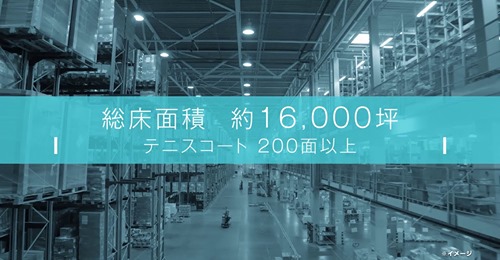
1. Introduction
Adhesive tapes are composite materials consisting of a backing substrate coated with an adhesive layer that bonds to surfaces upon application of pressure, moisture, or heat. These tapes replace mechanical fasteners and liquid glues in countless industries—from packaging and construction to electronics and healthcare—thanks to their ease of use, clean application, and tailored performance profiles.
2. Classification by Activation Mechanism
2.1 Pressure-Sensitive Tapes (PSA)
Pressure-sensitive tapes adhere instantly under light finger pressure without the need for solvents, water, or heat. They are the most ubiquitous tape category, encompassing office tapes, packaging tapes, and industrial bonding tapes. The performance depends on the adhesive chemistry and backing material, offering a range of tack, shear strength, and environmental resistance.
2.2 Water-Activated (Gummed) Tapes
Gummed paper tapes employ a starch- or dextrin-based adhesive that activates when moistened. Once dry, they fuse with corrugated board to create a tamper-evident, high-strength seal ideal for carton sealing and bulk packaging. Their biodegradable nature makes them environmentally friendly compared to plastic films.
2.3 Heat-Activated Tapes
Heat-activated (“hot-melt”) tapes use thermoplastic adhesives that liquefy under controlled heat, then solidify to form a permanent bond. They excel in bookbinding, automotive trim installation, and electrical insulation where durable, high-temperature resistance is paramount.
3. Adhesive Chemistries and Backing Substrates
The combination of adhesive type and backing defines a tape’s key properties.
| Adhesive Type | Advantages | Limitations |
|---|---|---|
| Rubber/Resin | High initial tack, low cost, bonds to many substrates | Poor UV and temperature resistance; ages faster |
| Synthetic Rubber | Improved shear resistance and moisture tolerance over natural rubber | Higher cost; moderate heat resistance |
| Acrylic | Excellent UV/oxidation resistance; long shelf life; broad temp. range | Requires cure time; less tack on low-energy surfaces |
| Silicone | Exceptional high-temperature stability; medical and electrical uses | Highest cost; lower initial tack |
Backing materials vary from paper and cloth to plastic films (PVC, PET, PE) and metal foils, each contributing distinct flexibility, tear resistance, and impermeability properties.
4. Key Tape Types, Features, and Uses
| Tape Type | Backing/Substrate | Adhesive Chemistry | Main Features | Typical Applications |
|---|---|---|---|---|
| Masking Tape | Crepe Paper | Acrylic | Easy tear, clean removal | Painting, surface protection, labeling |
| Duct Tape | Cloth-Reinforced Film | Synthetic Rubber | High tensile strength, water resistance | Quick repairs, duct sealing, bundling |
| Electrical Tape | PVC Film | PVC-based | Insulating, flame-retardant | Wire insulation, color coding, cable bundling |
| Carton Sealing Tape | BOPP/Film | Hot-melt / Acrylic water | Strong seal, moisture resistance | Shipping cartons, warehouse packaging |
| Double-Sided Tape | Paper/Film/Foam | Acrylic / Rubber | Invisible bond, variable thickness | Mounting, crafts, automotive trim |
| Transfer Tape | No backing (adhesive only) | Acrylic | Ultra-thin bond, precise placement | Graphic signage, decal application |
| Filament (Strapping) | Film + Fiberglass | Acrylic | Extremely high tensile strength | Heavy carton bundling, pallet reinforcement |
| Foil Tape | Aluminum / Copper / Lead | Silicone / Acrylic | Heat reflectivity, EMI/RFI shielding | HVAC duct sealing, electrical shielding |
| Cloth Tape | Woven Fabric | Natural / Synthetic | Durable, conformable, hand-tearable | Stage production, cable bundling, surface masking |
| Anti-Slip Tape | Textured Film | Acrylic | High traction, abrasion-resistant | Stairs, ramps, industrial flooring |
| Medical/Surgical Tape | Paper / Fabric | Hypoallergenic | Breathable, gentle on skin | Wound dressings, medical device fixation |
| Specialty Tapes | Polyimide, PTFE, Reflective | Silicone, Acrylic | Extreme temp., friction reduction, reflective | Aerospace, electronics, safety marking |
Descriptions and usage notes are synthesized from multiple industry sources.
5. Selection Criteria
When choosing a tape, evaluate:
-
Initial tack and long-term adhesion
-
Shear strength and environmental stability (UV, moisture, chemicals)
-
Operating temperature range
-
Residue upon removal and substrate compatibility
-
Regulatory requirements (food-grade, medical-grade)
-
Cost per application and lifecycle considerations
6. Application and Storage Best Practices
-
Ensure surfaces are clean, dry, and free of oils or dust.
-
Apply in the recommended temperature window (typically 15–30 °C for PSAs).
-
Apply uniform pressure for consistent bonding.
-
Allow water- or heat-activated adhesives to cure fully.
-
Store rolls flat in a cool, dry place away from direct sunlight.
7. Emerging Trends
-
Bio-based, compostable adhesives to reduce plastic waste.
-
Smart tapes with embedded sensors for tension monitoring in packaging lines.
-
Self-healing and self-cleaning surfaces for high-performance and medical applications.
-
Digital-twin modeling to predict adhesive performance over service life.
8. Conclusion
Understanding the interplay between adhesive chemistry, backing materials, and activation mechanisms is vital for specifying the right tape for any task. From heavy-duty industrial bundling to delicate medical dressings, each tape type delivers unique benefits. Mastery of selection and application ensures optimal performance, cost efficiency, and safety across all sectors.
For deeper dives, explore industry standards (ASTM D3330 for peel adhesion, ISO 9227 for weather resistance) and manufacturer technical datasheets.
How to choose the right adhesive tape? Visit QTE Technologies to choose from a wide range of adhesive tapes at competitive prices and best quality from trusted brands. We, a global MRO provider, serve customers in over 180 countries. Established in 2010, we offer over 1 million products across all industries and engineering disciplines. Additionally, you can reach us anytime via 24×7 chat support, phone, WhatsApp or email. Discover what our valued customers have to say about our services on our dedicated review page.
Post Author By QTE Technologies Editorial Staff (with a solid background in both technical and creative writing - accumulated 15+ years of experience).




